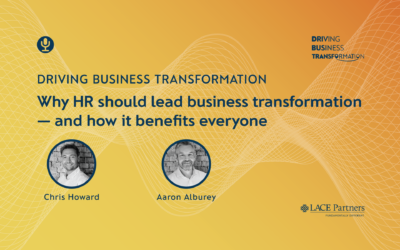Don’t leave it to the last minute
Don’t wait for the programme to be almost complete. Typically the BAU operations team will want to be involved in accepting the system and need to understand how it has been configured and “wired into” the rest of your estate – think interfaces, single sign-on and cross-system workflows as a minimum.
We always think that we have time to look at it, but I can talk from experience – and I am sure lots of readers will recognise themselves here – but thinking about BAU whilst trying to run the programme is never (never, never!) priority number one.
If your time is limited, I suggest tasking an individual to ‘own’ the definition, setup and transition to BAU operations. For example they will need to:
Step 1:
Understand how your Cloud BAU Operations team will fit within the broader BAU support function of your organisation. For example, will they be just another resolver group or will they have a more proactive role to play, especially with the periodic Cloud releases? Will the “super users” or “product owners” sit with BAU support or within the business, both physically and for budget and governance?
Step 2:
Identify roles and capabilities that will be part of the future operations organisation – involve the candidates for these roles in the programme (process design and/or testing) for knowledge transition, or consider using some of the programme resources, especially for “product owner” roles.
Step 3:
Define the budget that will be allocated to BAU post-implementation. One common challenge we see is clients underestimating the level of BAU operations support required, around ‘hyper-care’ immediately after go-live, as well as for perioding releases.
Step 4:
Prepare a structured plan for the transition. We know it is a big ask for our clients to think about post go-live support while trying to (just) go live but you need to plan and prepare your move from programme to BAU mode.
Clearly define the elements of your future BAU support model for Cloud
- Product owners, who typically sit within the business and are responsible for the ongoing development of the platform to ensure you maximise its capabilities, the user engagement and frankly the return on your implementation investment
- Functional support, which includes determining how to use new capabilities, release management, user adoption and vendor management
- Platform support, which includes integrations, technical configuration and environment and configuration management.
The scope of the BAU team varies between organisations and how they will fit into the existing BAU operations function – HR isn’t an island and understanding if your BAU operations function will need to provide first-line support (answering end user emails, tickets and calls), or if these will go to the existing BAU Tier 1 support desk for triage first, is just one example. You will also need to decide if these functions should be in-house or if they can be outsourced and, if outsourced, what data the outsource provider will have access to.
Don’t underestimate the shift to Cloud
This is different, this will feel different, this will take you out of your comfort zone.
New roles and new capabilities will emerge and will be required in the future. But, remember that you might not have either the skills or the resources (or both) to support your Cloud platform post go live.
We have seen too many times critical programme resources leaving after go-live. This is something you should plan to avoid, knowing that your post go live support team should be composed of resources who understand the new Cloud platform. You can’t leave that to chance. You need to be prepared.
Where we see the biggest shift and challenges post go-live are:
- Release management. How will you manage the regular platform upgrades? What will be the process going forward? Each release should be thought of as a mini project.
- Adoption. Have you identified all the new adoption and change activities required when implementing a Cloud platform? Do you have the right skills to manage all of them?
- User support. What will be the future service delivery model for query handling and systems support (i.e. IT or HR service delivery model)?
The earlier you are aware of what will change and how it will impact your current model, the better you can plan and set yourselves up for success.
Responsibilities for HR, IT and the Vendor
- Who owns the budget?
- What does the future governance model look like? Where will that support model report to?
- What’s HR responsibility vs. IT vs the Cloud Vendor?
This should be wrapped up into your BAU target operating model or TOM.






